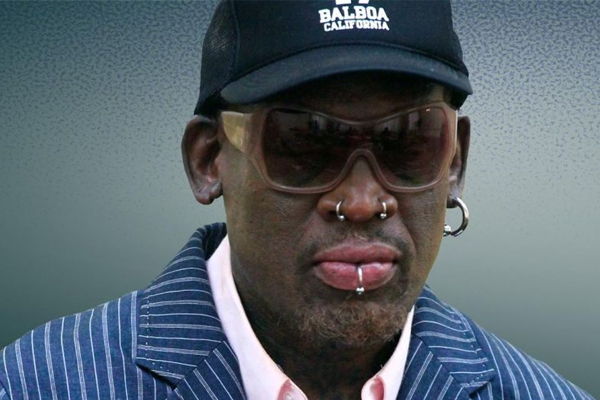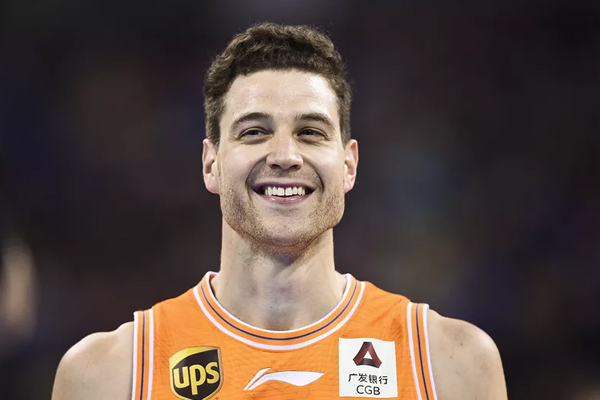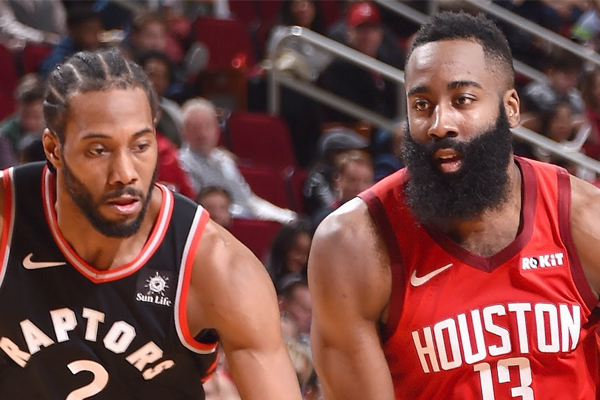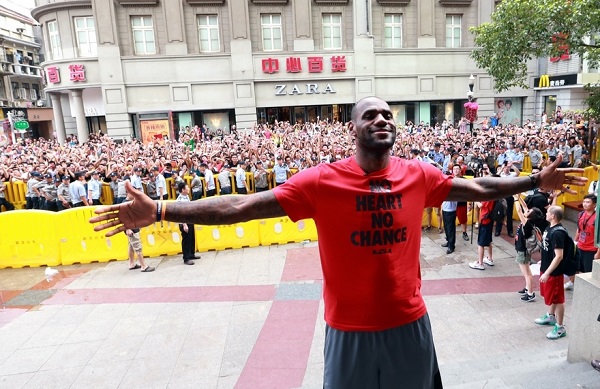
After an incredible seven-game NBA Finals series between the league’s two biggest stars that captured the attention and imagination of the nation and another wild free agency period that kept the NBA at the top of the sports news cycle for a month, it is becoming exceedingly clear that the NBA may be as popular as it has ever been.
The drama that the NBA postseason provides coupled with the drama that is the NBA free agency, which is perfectly suited for the social media driven world we live in today, have made the NBA one of our greatest forms of social theater. The league has dominated the summer sports landscape.
The NBA experienced a dark period post-Jordan in the late 90s and early 2000s. Many of the league’s expected next generation of superstars and marketable athletes dealt with devastating injuries including Grant Hill and Penny Hardaway, and the league was in search of marketable role models that appealed to all demographics of society including white America and inner city kids. Outside of Shaquille O’Neal, many of the league’s stars either lacked personality or a desire to be marketable stars (Tim Duncan, Kevin Garnett). Others were dealing with legal issues (Kobe Bryant), or were seen as a thug, whether fair or not, and were not completely accepted by certain demographics like Allen Iverson.
Scoring and shooting percentages were down and the league had lost much of the goodwill and momentum it had built when Magic and Bird saved the league in the 1980s and Jordan made it a global phenomenon in the 1990s.
The NBA’s perception problem hit rock bottom on November 19, 2004, when the “Malice in the Palace” happened. The league was viewed by many as a bunch of entitled, overpaid thugs. The NBA had to completely re-brand itself after its darkest hour and began enacting certain rules on the court like no hand-checking, allowing of zone defenses and defensive three seconds. There were also rules off the court like a stricter dress code which required inactive players to wear suites on the bench and for road teams to wear suites as they arrive to an arena. All of this was to help bring more excitement and scoring to the game and resuscitate the Q rating of the league with the American public.
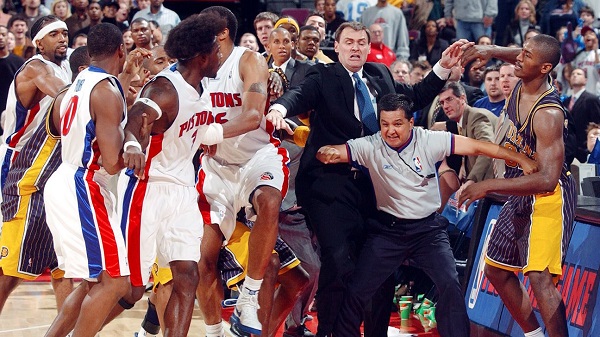
Slowly but surely a new crop of superstars entered the league as the beneficiaries of these rules and helped transition the league to a new era like LeBron James, Dwyane Wade, Kevin Durant and most recently Steph Curry. This intertwined with the stars of the 2000s like Kobe, Duncan, Garnett, Nash, Dirk and Vince Carter in the midst of their primes helped establish a solid talent base and brought back many fans who had left.
Flash forward to today and the The NBA is coming off its highest rated finals since the days of Jordan and has a pair of super teams that could compete for the NBA title for the next three to five years, much like the Lakers and Celtics in the 1980s. Although that may not be the best for parity in the league, the dirty secret about the NBA is parity is not good for the league. The NBA was on the brink of failure in the 1970s when parity was at its greatest as eight different teams won an NBA title from 1970 to 1979. It wasn’t until the league had a couple of mega stars that played on super teams on each coast in the 1980s that the league truly became a huge success. There have been 11 teams to win an NBA title since 1980. Super teams aren’t great for smaller market teams hoping to compete for a title, but they are great for the NBA’s popularity and ultimately its bottom line. This concentration of the league’s talent coupled with the New TV deals that has given the league an embarrassment of riches where guys like Timofey Mozgov are worth $16 million (still questionable) a season in the current market means that the league is as positioned as ever to try and increase its place in the market locally and abroad.
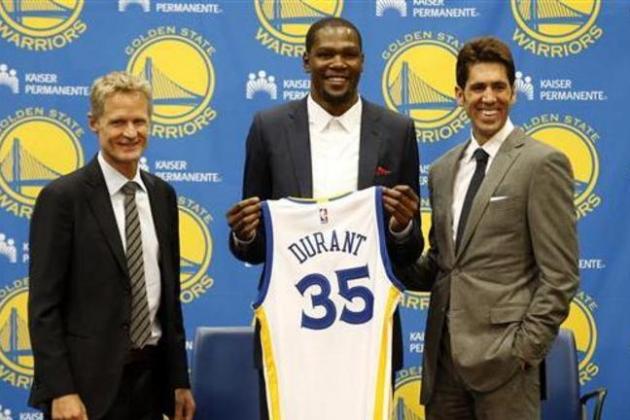
The NBA currently has the two most popular, marketable, role models in American professional sports in LeBron James and Steph Curry. They also feature a number of other highly marketed athletes that have numerous ad campaigns and a large following:
Blake Griffin
Chris Paul
Kevin Durant
Russell Westbrook
Kyrie Irving
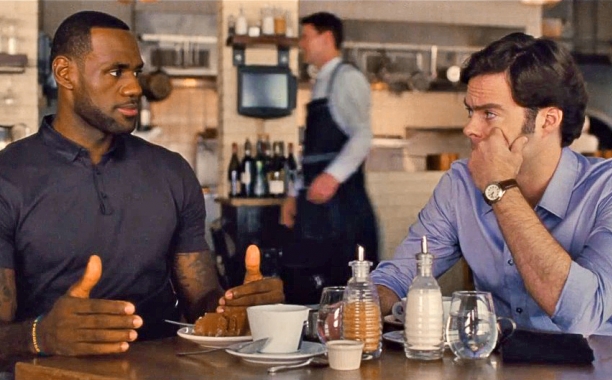
Compare that to the other major professional American sports and the NFL is the only other league with active athletes who are highly marketed and who have household names throughout the country like Cam Newton, Aaron Rodgers and J.J Watt.
The NHL will always struggle to create marketable athletes and the MLB is under going a identity crisis as the game of baseball is not suited for limited attention span and highlight centered desires of the modern American sports fan. Their median age of viewers is over the age of 50. There is not one highly marketable young athlete in baseball, Bryce Harper is the closest thing.
The NFL is still the most popular American sports league by leaps and bounds partially because of the inherent advantages it has as a league that only plays 16 games on Sunday’s in the fall. Compare that to the grueling 82 game schedule the NBA has in place, only a true fanatic is going to be excited to watch the Bucks and Hornets on a Tuesday night in December. Sunday is a day of rest and leisure for many Americans and in many parts of the country the weather is so awful during much of the fall and winter most people opt to stay in and watch television on Sunday afternoons and evenings. The NFL has established itself as the premier form of entertainment in that realm for quite some time. The rise of fantasy football and sports gambling have also helped the NFL become the behemoth it is today.
The NFL and the game of football are also dealing with a number of serious issues that threaten its long-term viability. Concussions, life-expectancy and quality of life for retired players are controversial topics as the highly physical and violent nature of the game has led to big lawsuits from former players. Parents around the country are choosing not to let their children play youth football, these impacts will begin to be felt in the next 10 to 15 years as the game of football must adapt to survive and the pool of talent dwindles.
Combine this with the negativity surrounding the league and it’s dictator for a commissioner and you have a juggernaut at the forefront of the sports landscape that is ripe to be overtaken in the next 20 years by the NBA.
So how can the NBA accomplish this objective? By partially following the NFL’s model, altering the league calendar, expanding the draft and utilizing some creativity to maximize exposure.
Expand to 32 Teams
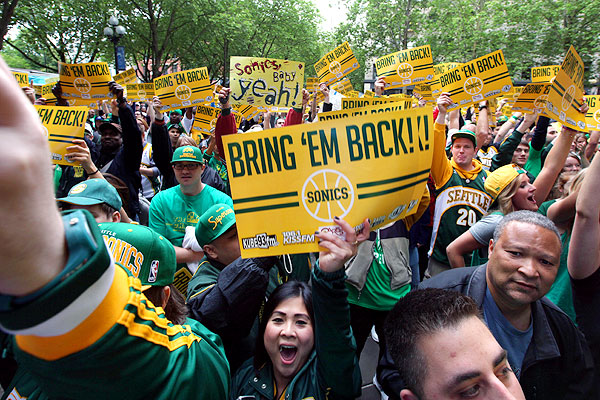
I know this seems counter intuitive with roughly 30 percent of the league’s top 20 talent concentrated on two teams, but there is so much talent in the league and around the world considering only the top 400 players are in the NBA, that the league could manage a two team expansion to get to an ideal number of 32 teams like the NFL.
The two expansion franchises would be in Seattle, as the Sonics would return much to the delight of the rabid Seattle fan base, and in Las Vegas. The NHL is the first to jump in on this potential burgeoning market and the NFL may be on their way with the Raiders. The NBA and Las Vegas seem like a perfect match and would be a huge success.
You could add both of these teams to the western conference and have eight four team divisions, four in each conference much like the NFL:
Pacific:
Los Angeles
Los Angeles
Golden State
Sacramento
Southwest:
Phoenix
Utah
Denver
Las Vegas
Mid-South:
San Antonio
Houston
Dallas
New Orleans
Northwest:
Seattle
Portland
Oklahoma City
Minnesota
Atlantic:
New York
Brooklyn
Toronto
Boston
Southeast:
Atlanta
Memphis
Miami
Orlando
Mid-East:
Washington
Cleveland
Charlotte
Philadelphia
Central:
Chicago
Milwaukee
Detroit
Indiana
This way half of the league makes the postseason and half the league is in the lottery which makes sense. You could guarantee division winners a post season spot but the top four records in each conference earn the top four seeds and home court.
Here is how the schedule would break down for each team in an 82 game season with this new divisional format:
32 games vs. opposite conference (1 home and 1 away)
36 games against conference opponents not in division (3 games for all 12 teams)
12 home and away games against divisional opponents (2 home and 2 away against other three division teams)
2 neutral site games (to be explained later)
Start The Season On Christmas Day
Let’s be honest, only your most fanatic of NBA fan pays close attention to the league before the NBA’s annual Christmas Day Showcase.
The NFL and college football dominate the topic of conversation and headlines from September until February so why even bother starting your season in October?
You can still maintain an 82 game schedule to appease owners and not give up any revenue.
Here is a revised yearly calendar under this proposition:
Christmas: Opening Day
Mid-April: Trade Deadline and All-Star Weekend
June: Playoffs begin
Mid-July: NBA Finals begin
Late August: NBA Draft
Labor Day Weekend: Free Agency
You may be thinking how can you fit the entire regular season from Christmas day through the end of May? When you look at a calendar of the 2015-16 season which started on October 27 and ended on April 13, teams basically played a game every other day (every 2.04 days to be exact), while with a schedule that starts on Christmas day and ends on May 31, teams play a game every 1.9 days on average. A very minute difference that can be managed with modified scheduling techniques.
With this revised schedule the NBA is basically avoiding competition with the NFL for ratings during it’s season and is able to completely dominate the summer which is typically a down time for sports during the dog days of the baseball season and little else from a sports perspective.
April is also a down time for sports after the NCAA Tournament and before the NFL Draft so it is a good time to take advantage by having All-Star Weekend and the trade deadline in mid-April. The NBA could even follow Bill Simmons’ hilarious idea to make the NBA trade deadline at 2 AM on All-Star Saturday night to make the weekend even more of a spectacle and create the 5 percent chance a drunken GM agrees to an awful trade.
In all seriousness, one big drawback of this new schedule is it limits the pool of potential NBA superstars representing the NBA in the summer Olympics every four years. Players who had a deep postseason run leading directly up to the Olympics wouldn’t want to participate in the Olympics, but there is still a large talent base to pull from for Team USA. The FIBA World Championships are in September so that wouldn’t be affected by the new NBA schedule.
Summer league becomes Fall league and training camp starts in November.
Have a Global Tournament Series Every February
The NFL is determined to make American football and international game and phenomenon and has staged games in London for years, but the fact of the matter is football will never catch on around the world and basketball is the 2nd most popular sport in the world behind Soccer. The NBA should capitalize on that.
According to a story on Forbes.com from Roger Groves in December of 2015, The NBA has already increased the number of early afternoon games on Sunday’s so their European audience and the 114 countries around the world who have access to watch the NBA can view games live on Sunday night. According to the NBA’s Vice President of Global Media Distributions and Business Operations Matt Brabants, these games have become “appointment viewing”.
The seeds have been planted for the NBA to become a global league unlike any other major American professional sports league and a global tournament series is the next step.
Each of the eight divisions can host a four team divisional tournament as part of their 82 game schedule with the match-ups based on current standings and a championship and 3rd place game.
Here is a prospective listing of sites for the divisional tournaments:
Central Division (Milwaukee, Chicago, Indiana, Detroit): England
Atlantic Division (New York, Brooklyn, Toronto, Boston): Italy
Pacific Division (LAL, LAC, Sacramento, Golden State): China
Mid-East: (Washington, Cleveland, Charlotte, Philadelphia): India
Southeast: (Orlando, Miami, Atlanta, Memphis): Turkey
Southwest: (Phoenix, Las Vegas, Utah, Colorado): Mexico
Mid-South: (San Antonio, Houston, Dallas, New Orleans): Argentina
Northwest: (Seattle, Oklahoma City, Portland, Minnesota) Japan
The revenue directly generated from the games along with the ancillary revenue created from increased merchandise and ticket sales could be given to the team in each division that wins the tournament. For instance, with the revenue sharing system the NBA has now each of the eight divisions would get one-eighth of the shared revenue portion of profit for the NBA in a given year, instead of all four teams getting 25 percent of that portion in a given division. The team that wins the global tournament gets 33.3% of the division’s shared revenue for the league year while the other three teams get 22.2% of the shared profit.
This would be ample motivation for owners and teams to want to win this divisional tournament and could help convince them to vote in favor of adding two expansions teams in the first place, something many may be against initially because of revenue sharing.
Networks and streaming services like Yahoo, YouTube or even Amazon or Netflix could bid to air these tournament games which would be very forward thinking and lead to more partnerships, advertising opportunities and exposure to different demographics to promote the NBA game.
Make the NBA Draft 3 Days, 3 Rounds
Another thing you can take from the NFL is to follow their highly successful model of a three day draft. I realize the NFL Draft is seven rounds so that makes more sense, but you can still easily make this a possibility by adding a 3rd round.
NBA Draft Thursday Night: 16 Lottery Picks
NBA Draft Friday Night: Second half of 1st round and 2nd round
NBA Draft Saturday morning: Round 3 the D-League and international rights round
If the NBA wants to truly build a farm system akin to Major League Baseball, the league should allow each team to hold the rights to 25 players, 15 on the active roster and 10 on their D-league affiliate. They should pay D-league players somewhere in the range of $200k a year with two-year guaranteed contracts. D-League teams should include a fair amount of raw international prospects taken in round 3 of the NBA Draft.
The winner of each D-league division that aligns with the corresponding NBA division would make an 8 team playoff tournament to be held at the international site of the No. 1 seed’s yearly NBA global tournament.
For instance if the D-League affiliate of the Phoenix Suns had the best record in the D-League, the eight team playoff tournament with the other D-League division winners would be held in Mexico City.
This way the NBA develops a true farm system and corners the market on young talent around the world, makes the NBA Draft a three-day ordeal with more interest and advertising dollars, and accomplishes the goal of building team and brand loyalty with their international fans to make the league a true global phenomenon to a level that an American professional sports league has only dreamed of.
These are just a few radical and outside of the box ways for the NBA to try and capitalize on the golden era it is entering. It can overtake the NFL in local popularity over the next 20 years and establish itself as the premier professional sports league around the world.

